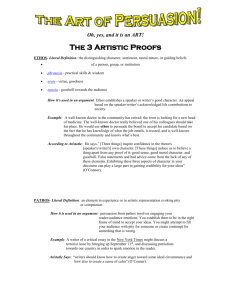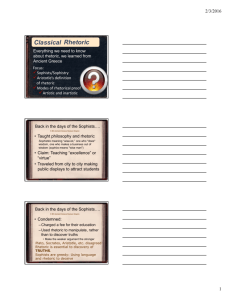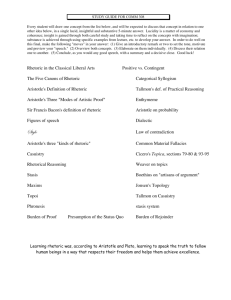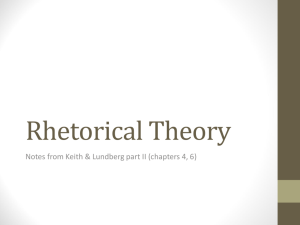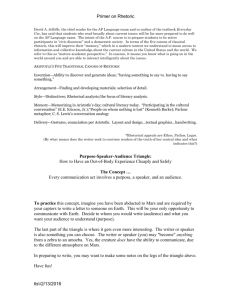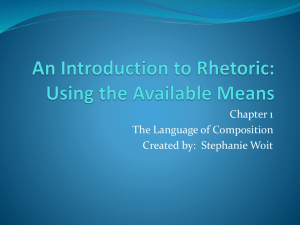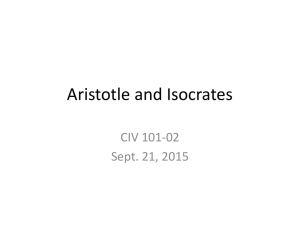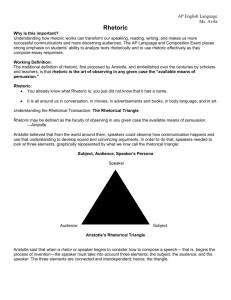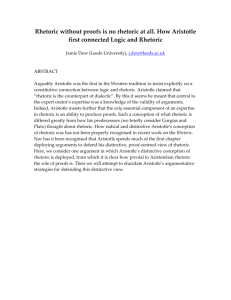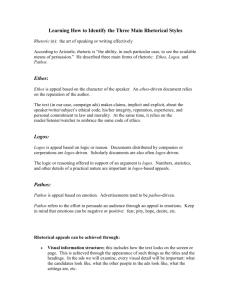Rhetoric for CEMUS 12 feb 2014
advertisement
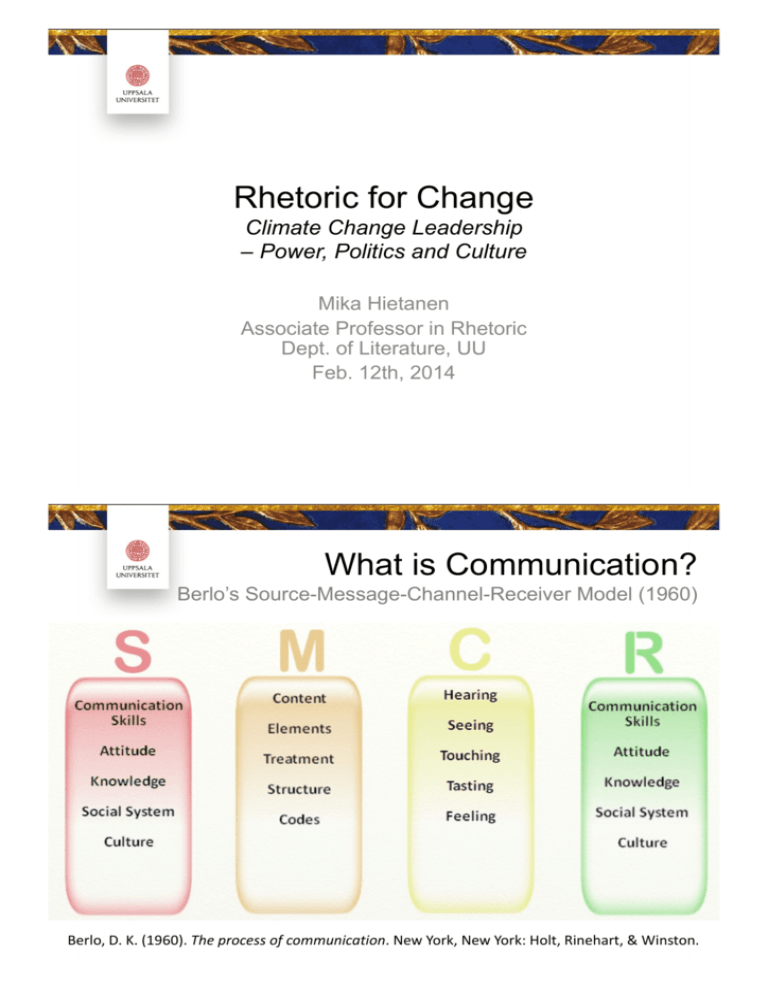
Rhetoric for Change Climate Change Leadership – Power, Politics and Culture Mika Hietanen Associate Professor in Rhetoric Dept. of Literature, UU Feb. 12th, 2014 What is Communication? Berlo’s Source-Message-Channel-Receiver Model (1960) Berlo,'D.'K.'(1960).'The$process$of$communication.'New'York,'New'York:'Holt,'Rinehart,'&'Winston. What is efficient communication? I. The successful delivery of an uncorrupted message The audience to understands our message as we intended. Two questions towards success: a) What exactly do I want to say? Tip: summarize the core of your message in one sentence and also in an elevator pitch b) How should I say it in order for the receivers to understand it correctly? – the right content (topic, selection) and the right format (language, level, format, scope) – depends on the audience … (cont.) What is efficient communication? II. Visible consequences The receiver begins to think or act as intended by the sender. –> What changes or results do we want to see in our listenders or readers? ! To summarize: • if you don’t know exactly what you want to say, the audience will be confused as well • if you cannot match your content and form to the specific audience, they probably cannot understand you either How does a speaker or writer achieve success? ! Cicero’s three “duties” of a speaker: • docere (teach) • delectare (entertain) • movere (move) ! Aristotle’s ”artistic” proofs: • logos • ethos • pathos ! Aristotle’s ”non-artistic” proofs: • laws, documents, testimony, etc. The classical disposition of a speech i. ii. iii. iv. v. Greetings (exordium) – evoke the audience’s goodwill, trust and interest Introduction (narratio) – give enough background and context to make your presentation understandable and relevant Thesis (propositio) – what is the main idea or suggestion in your message (if this part is unclear after the presentation, all is lost) Argumentation (argumentatio; refutatio) – give varied support for your thesis: research, examples, statistics, graphs, comparisons, and consider relevant objections (ethos, pathos logos, and non-artistic proofs) Conclusion (peroratio; recapitulatio) – implications, next steps, connect with the audience Nine points of advice COMMUNICATION & SLIDES Using slides – Nine points of advice 1. For each slide, ask yourself: how does this help the listener to appropriate my message? ! 2. Be mindful of content and form, they should support each other in a clear way. ! 3. Do not write out your manuscript in PowerPoint form (only bullets, quotations, graphs, pictures). Using slides – Nine points of advice 4. Do not let the slides come between you and your audience. ! 5. The spoken word should be primary, while text and pictures complement and amplify your message. ! 6. Ideally, the presentation summarises your message and works as a visual, dispositional and mnemotecnic aid. Using slides – Nine points of advice 7. It is difficult to listen, read and write at the same time. ! 8. Consider handouts if you need to share larger pieces of text or data. ! 9. When using slides, consider Aristotle’s definition of rhetoric: ”the ability in each case to find that which is most persuasive.” Suggested reading Everything’s an Argument Andrea A. Lunsford & John J. Ruskiewicz & Keith Walters, Boston, New York: Bedford/St. Martins, 6th edn 2012 ! Learn to Write Badly: How to Succeed in the Social Sciences Michael Billig, Cambridge: Cambridge University Press 2013
